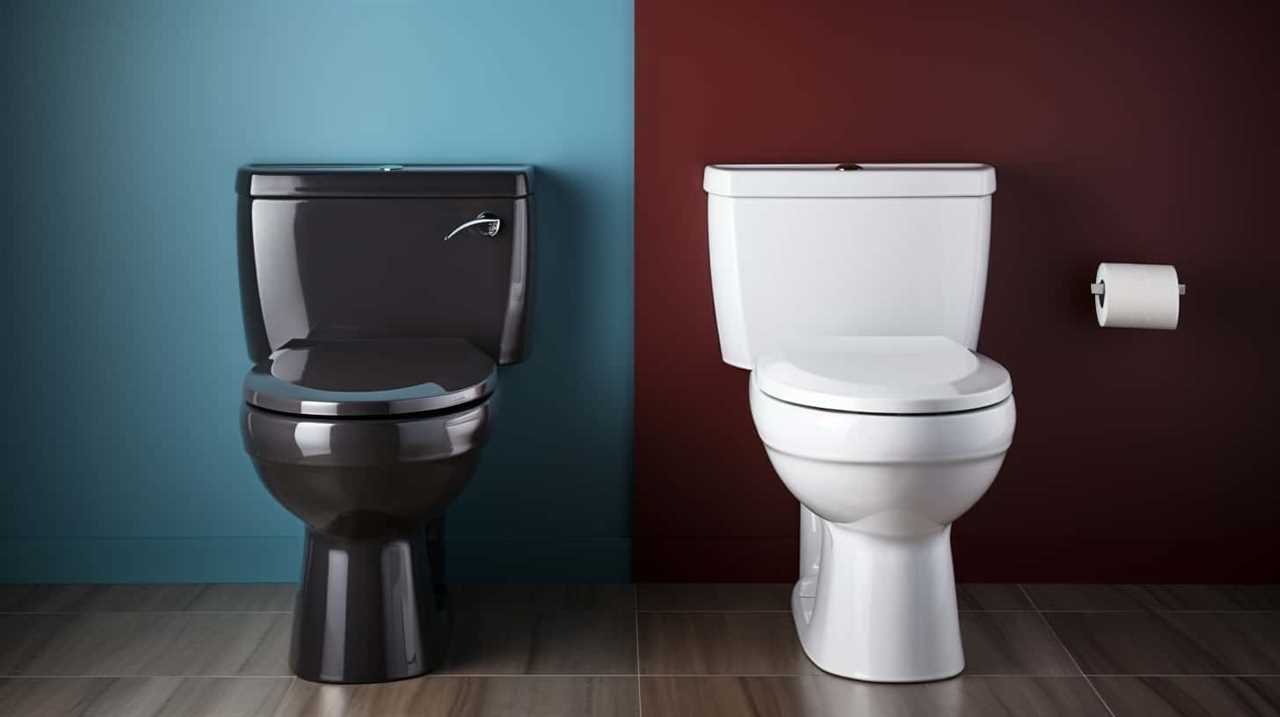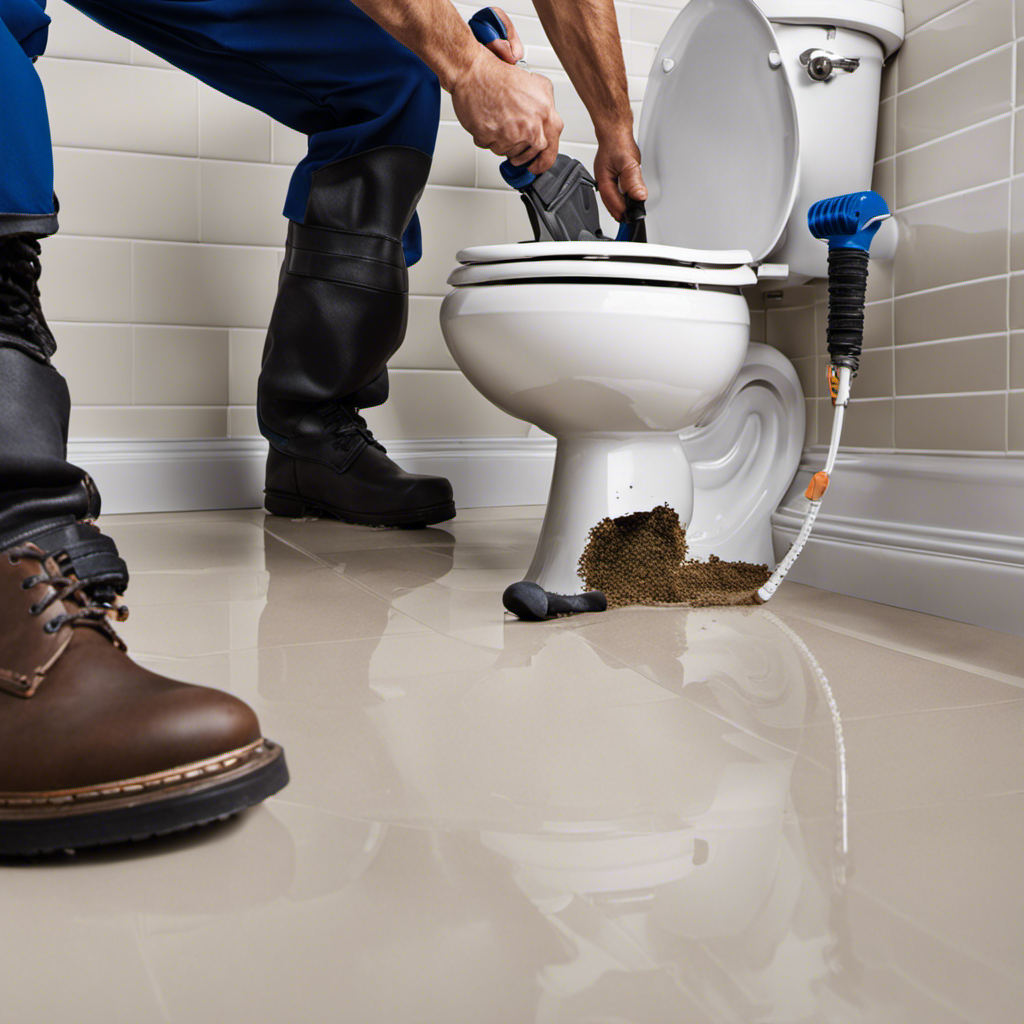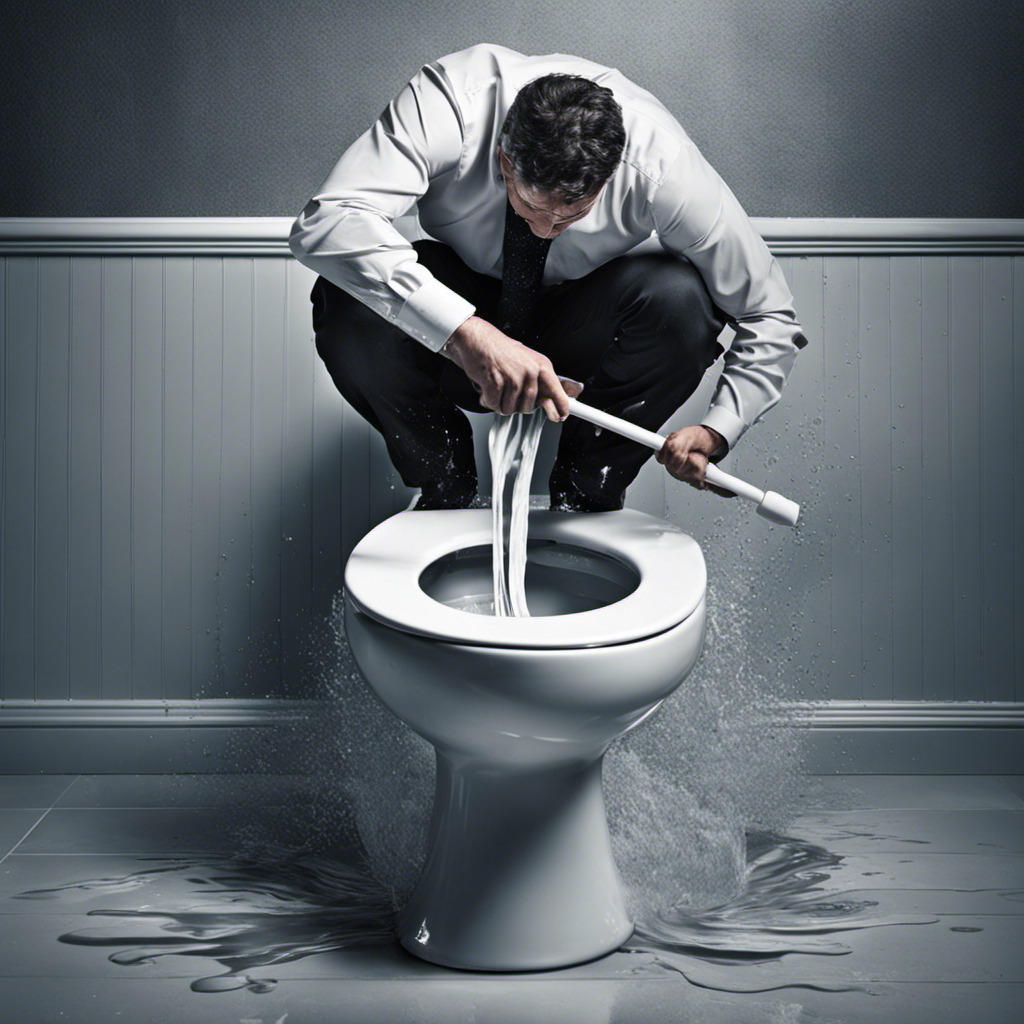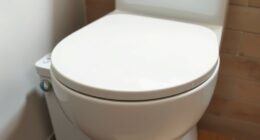Did you know that the average person flushes the toilet about 2,500 times a year?
With so much water being used, it’s crucial to ensure that the water level in the toilet bowl is properly maintained.
In this article, I will discuss the importance of having the correct water level, the factors that affect it, and provide solutions for common problems.
By following these tips, you can maintain an optimal water level in your toilet bowl, saving water and preventing any potential issues.
Key Takeaways
- Proper water level in the toilet bowl is important for effective flushing and preventing waste from lingering.
- The size of the tank and the water supply mechanism affect the water level in the toilet bowl.
- The correct water level is about one inch below the overflow tube or fill line.
- Maintaining the optimal water level helps prevent weak flushes, leakage, and wasted water.
The Importance of Proper Water Level in Toilet Bowl
You should make sure the water level in your toilet bowl is at the proper height for optimal functionality and efficiency. Maintaining the correct water level offers several benefits.
Firstly, it ensures effective flushing, preventing any waste from lingering in the bowl. This helps to maintain proper hygiene and prevents unpleasant odors.
Secondly, the right water level prevents excessive splashing and overflow during flushing, reducing the risk of water damage to your bathroom floor. Additionally, the correct water level allows for proper water sealing, preventing any foul smells from escaping the sewer system.
On the other hand, an incorrect water level can lead to various potential issues. If the water level is too low, it may result in weak flushing or incomplete waste removal. Conversely, if the water level is too high, it can cause constant refilling of the tank, wasting water and increasing your utility bills.
Therefore, it is crucial to regularly check and adjust the water level in your toilet bowl to ensure its optimal performance.
Factors Affecting the Water Level in Toilet Bowl
One factor that affects the water level in the toilet bowl is the size of the tank. The toilet bowl capacity determines how much water can be held in the bowl at any given time. If the tank is small, it can only hold a limited amount of water, resulting in a lower water level in the bowl.
On the other hand, a larger tank can hold more water, allowing for a higher water level in the bowl. Another factor that affects the water level is the water supply mechanism. If the water supply is restricted or malfunctioning, it can lead to a lower water level in the bowl.
It is important to ensure that the toilet bowl capacity and water supply mechanism are functioning properly to maintain the desired water level in the toilet bowl.
How to Determine the Correct Water Level in Toilet Bowl
To determine the correct water level in your toilet, simply observe the height of the water in the tank. The water level in the toilet bowl is directly related to the water level in the tank. Ideally, the water level should be about one inch below the overflow tube or the fill line marked on the inside of the tank.
If the water level is too high, it could result in constant water flow or even overflow. On the other hand, if the water level is too low, you may experience weak flushes or incomplete waste removal. Adjusting the water level in the toilet bowl can be done by adjusting the float arm or adjusting the fill valve.
Troubleshooting toilet bowl water level issues is essential to ensure proper functioning of your toilet system.
Now, let’s move on to the next section where we will discuss common problems and solutions with water level in the toilet bowl.
Common Problems and Solutions With Water Level in Toilet Bowl
If the water level in the tank is too low, it may result in weak flushes or incomplete waste removal. In some cases, this can even lead to toilet bowl leakage.
To avoid these issues, it is important to ensure that the water level in the toilet bowl is properly adjusted. The optimal water level should be about halfway up the sides of the bowl.
To adjust the water level, locate the fill valve in the toilet tank and adjust the float or fill height to increase or decrease the water level. It is crucial to find the right balance, as having too much water can also cause problems.
By maintaining the optimal water level, you can prevent weak flushes, incomplete waste removal, and potential toilet bowl leakage.
Now, let’s explore some tips for maintaining the optimal water level in the toilet bowl.
Tips for Maintaining the Optimal Water Level in Toilet Bowl
Make sure you regularly check the fill valve in your tank and adjust the float or fill height as needed to maintain the optimal water level in your toilet.
Troubleshooting low water levels can be a common issue in toilets. If you notice that the water level in your toilet bowl is consistently low, there are a few things you can check.
First, make sure the fill valve is fully open and allowing water to flow into the tank. If it is partially closed or blocked, it can prevent the tank from filling properly.
Additionally, check for any leaks or cracks in the toilet bowl or tank that may be causing water to escape.
To prevent water overflow in the toilet bowl, ensure that the fill valve shuts off properly when the tank is full. This can be achieved by adjusting the float or fill height to the recommended level.
Regular maintenance and troubleshooting can help you maintain the optimal water level in your toilet bowl and prevent any potential issues.
Frequently Asked Questions
Can I Adjust the Water Level in My Toilet Bowl?
Yes, I can adjust the water level in my toilet bowl. By adjusting the water level, I can impact the flushing efficiency. It’s important to find the right balance for effective flushing while conserving water.
What Are the Consequences of Having Too Much Water in the Toilet Bowl?
Having too much water in the toilet bowl can lead to overflowing, which can cause water damage and potential plumbing issues. Insufficient water, on the other hand, may not effectively flush waste, leading to clogs and unpleasant odors.
Is It Necessary to Have a Certain Amount of Water in the Toilet Bowl for It to Flush Properly?
It is necessary to have a certain amount of water in the toilet bowl for proper flushing. Toilet bowl water level preferences vary, but factors affecting flushing efficiency include water volume, pressure, and trap design.
Can a Low Water Level in the Toilet Bowl Cause Any Plumbing Issues?
A low water level in the toilet bowl can lead to plumbing issues such as poor flushing and clogging. It is important to ensure an adequate water level to maintain proper functionality and prevent potential problems.
Are There Any Health or Safety Concerns Related to the Water Level in the Toilet Bowl?
There can be health risks associated with a low water level in the toilet bowl, such as inadequate waste removal and increased odor. However, maintaining a lower water level can promote water conservation.
Conclusion
In conclusion, maintaining the correct water level in the toilet bowl is crucial for optimal functionality and efficiency. By understanding the factors that affect the water level and following the proper guidelines for adjustment, you can ensure a smooth flushing experience.
Remember to regularly check for common problems and implement the necessary solutions to avoid any inconvenience. By adhering to these tips, you can maintain the optimal water level in your toilet bowl and enjoy a hassle-free bathroom experience.










